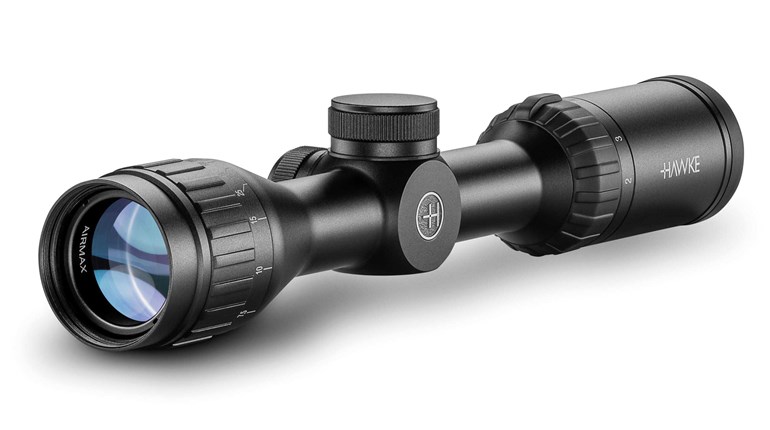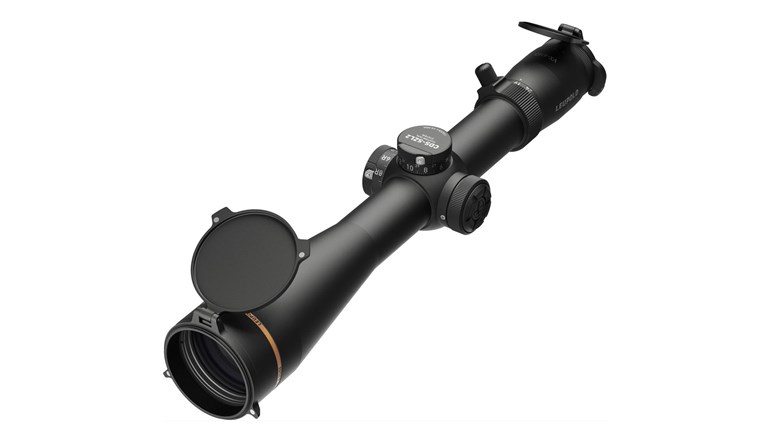
One thousand and fifty yards away, two mule deer bucks browsed along a near-vertical canyon wall. My 13-year-old son, Josiah, had spotted them through his binocular just minutes before, and now I stared at them through my spotting scope, intent on ascertaining whether either was mature. Sure enough, both were shooter bucks. We shouldered our packs and hot-footed our way toward the deer.
It didn’t take long to close the distance. Crawling on our bellies, we circled under the limbs of an ancient juniper tree and edged up to the cliff atop our side of the canyon. Josiah snapped his Javelin Pro bipod under his rifle and settled in prone as I hit the buck with my laser rangefinder. Massive and non-typical, the uppermost buck was 499 yards distant. Josiah cranked the custom dial on his Leupold 2.5-8x36mm riflescope, and dropped the buck with a single well-placed shot.

Hunting big game like mule deer, elk or pronghorn across the wide-open expanses of the West requires a specific set of optics. Western big-game tags are growing increasingly hard to get, and the wise hunter will do their best to capitalize on the few opportunities that come their way. That means using good optics, and using them effectively. Here’s what you’ll need:

Binocular
The first order of business during a wide-open-spaces hunt is to find game. That can be a tall order in territory where there might be only a few animals per square mile. Tramping around hoping to run across your quarry is not going to cut the mustard. You’ll need a good binocular through which you can study vast amounts of habitat. My favorite all-around size is 10x42, though I like an 8x glass for hunting thick cover, or a 15x binocular for hunting very elusive game like coues deer, or truly big country where I’m glassing miles away.
To use your binocular right, climb to a point of vantage where you can see lots of good country. Get comfortable, and then pick the area apart through your glass. Study obvious good spots first, but don’t neglect the rest. Many times I’ve spotted a big buck or bull where no one expected it to be. Methodically study the entire area, and then start all over again. Repeat. Due to vegetation and uneven terrain, you can only see a percentage of the landscape from any given point. Much of the time game in the area will simply be out of sight. Watch long enough, and they’ll move into view. Patience and diligence are truly valuable during this stage of the game.

Spotting Scope
Once you’ve spotted game, you’ll need to determine whether it’s an animal you’re interested in stalking. Here’s where the spotting scope comes in. You’ll want a spotter with at least 20x magnification, and at times up to 60-power can prove to be a real asset. My favorite spotting scopes include a Zeiss 15-45x65mm and a Maven 12-27x56mm. Both are lightweight; the Zeiss is better at distance while the Maven is superbly compact and light for hardcore backpack hunts.
To use your spotter effectively, you’ll need to mount it on a sturdy lightweight tripod. A word of caution here is in order; do not try to get by with a cheap tripod. Your spotting scope will shimmy and shake like a cricket on meth anytime the wind blows, rendering it impossible for you to get a good look at your target. Instead, spend the extra cash to get a good tripod. Once you’ve spotted game with your binocular, fix your spotting scope onto the game, focus it nicely and ascertain if you wish to stalk what you see.

The last role your spotting scope will play is during the actual shot. Anytime a hunter takes a shot beyond 300 yards, it’s best to have an experienced hunting partner viewing the action through a big lens. He can help make wind calls, spot the bullet’s impact and call a correction if one is needed. Also importantly, he can watch what happens on the other end of the action. Usually, an animal that has been hit will drop out of sight or dash behind cover, often leaving the shooter (who has just dealt with the recoil of his rifle) discombobulated and uncertain whether he made a good shot or not. A good spotter using a good spotting scope will have the answers to all those questions.

Rangefinder
Modern laser rangefinders have single-handedly changed the way we hunt. Now we can measure yardage exactly. That’s important anytime you shoot beyond 250 yards, which is the distance most calibers will start dropping out of the “kill” zone. With a good rangefinder, you can simply hit the button, read the range, adjust your scope to compensate and make an accurate kill shot.

My favorite rangefinders are built into high-quality, well-designed binoculars. This eliminates the need to carry an extra gear item. Better yet, it eliminates the need to lower your binocular, grab your rangefinder and laser the target, and then fumble the rangefinder back into its pocket. With a bino/rangefinder combo, you simply push the button and read the range; no need to fuss around. That said, there are some great stand-alone rangefinding units available. I’ve used them extensively, and love them. The best rangefinding units today—both bino-combo’s and stand-alone units—incorporate atmospheric and ballistic capability and software, and will provide you with a dial-to come-up matched to your rifle and caliber. Then all you must do is dial the turret on your riflescope (if applicable), read the wind and settle in for the shot.

Riflescope
Here’s where the rubber meets the road, so to speak. You’ve spotted a buck or bull with your binocular, assessed it with your spotting scope, measured the distance with your rangefinder and now it’s time to make the shot. A good riflescope is the final link in the optical chain connecting you with your quarry.
Too many hunters opt for extreme magnification in their hunting scopes. I’m talking rigs with a top power of 20x-plus magnification and gargantuan objective lenses (front end). After 30-plus years of hunting Western big game, never have I ever shot an animal with my scope turned above 12x. And that’s including the “long-range” shots I have made. In fact, my most common power setting during difficult shots is nine. I can see clearly (thanks to superb glass) and, due to using a mid-range power setting, I have a large enough field-of-view that I don’t loose sight of my game even during recoil. That’s a valuable thing when a follow-up shot might be necessary, which applies to every hunting situation.

My preferred size for a Western hunting scope falls in the 2.5-8x36mm up to 3-18x44mm range, depending on the terrain and game I’m hunting. Great scopes are available from Zeiss, Swarovski, Maven, Leica, GPO and others. I use and love them all, but I’ll confess my favorites are Leupold. They are utterly reliable, sport great glass and fantastic engineering, and are made in the USA.
Your Western hunting scope should possess a good ballistic turret, ideally one with a zero lock and zero-stop type mechanism. Get a custom yardage-marked turret matched to your caliber, ballistics, elevation and anticipated weather conditions. I like my rifles zeroed at 200 yards for hunting Western big game. Get your turret cut accordingly. Then all you have to do is range the target or animal, dial the custom turret to match and press the trigger. It’s an awesome, almost-foolproof setup ideal for making challenging shots in big territory.

Quality
Now that you understand the value of this complete four-optics system for hunting the wide-open spaces of the West, I’d like to impress one last thing on you before you start building your own tool set of optics: Get the best quality you possibly can. The difference in clarity, precision, reliability and weight can be huge, and will at some point in your hunting career make the difference between success and failure.
When I was just a gangly teenager of 17, I recognized that hunting optics were going to play a big part in my future. I started saving every spare dollar I earned. It took me a year and a half to save enough for the best binocular on the market. I have used them hard from Alaska to Texas, and have never regretted the sacrifices it took to buy them. They have never let me down. Even today, 30 years later, they are superb glass. If you use the same strategy, your glass will last longer than you do, and be appreciated by some hard-core grandkid hunting the West like you did.
































